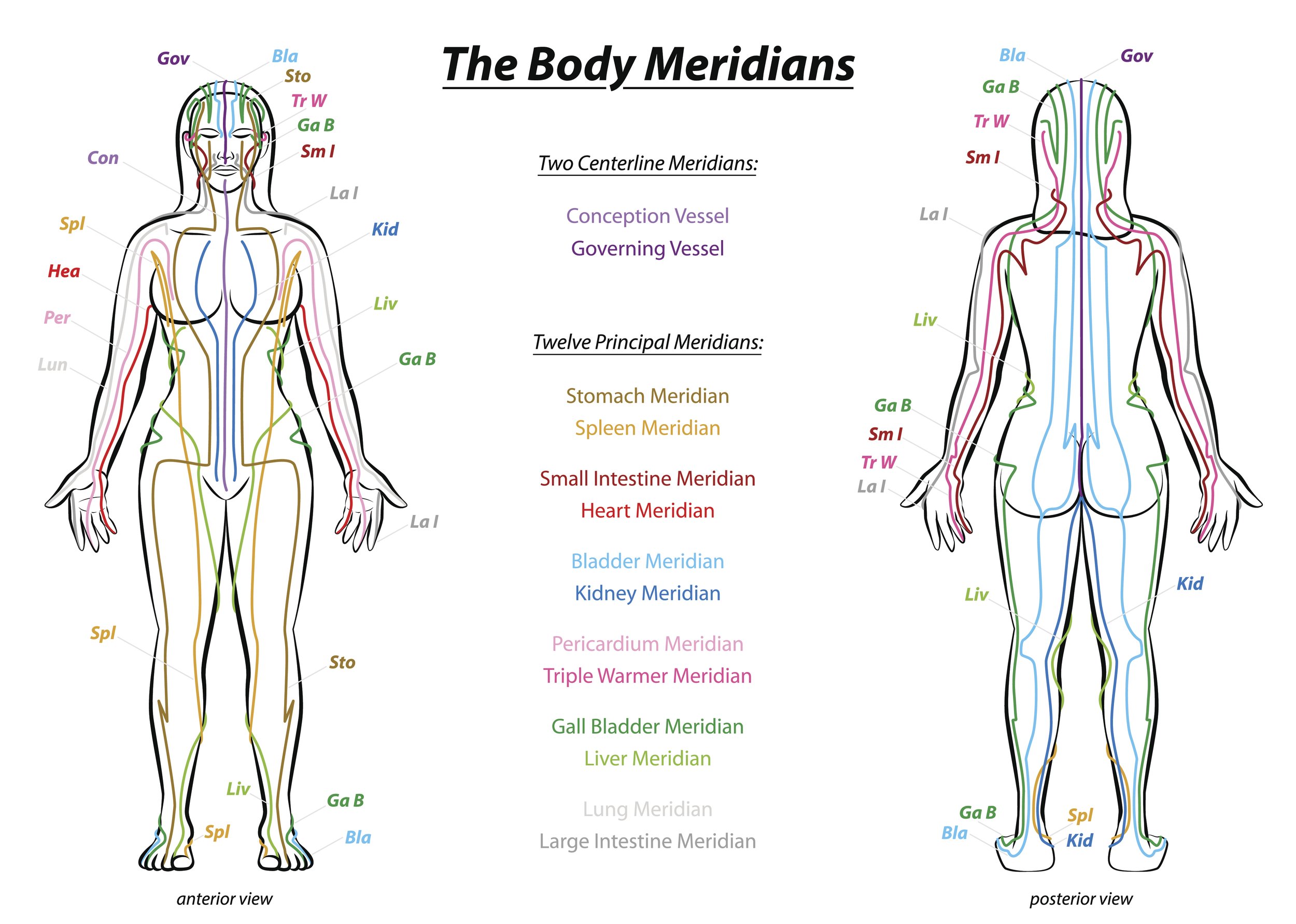The Meridians
In Traditional Chinese Medicine, a meridian is a channel through which qi, or energy, and the other fundamental substances flow. Meridians are also known as acupuncture meridians and energy vessels.
The meridians function as a network, much like a highway system, that can be mapped out throughout the entire body. Meridians, unlike systems of Western medicine (circulatory and nervous systems, for example) are not physical entities.
The Twelve Standard, or Primary, Meridians, also called Principal Meridians, are divided into Yin and Yang groups. The Yin Meridians of the arm are lung, heart, and pericardium. The Yang Meridians of the arm are large intestine, small intestine, and triple burner. The Yin Meridians of the leg are spleen, kidney, and liver. The Yang Meridians of the leg are stomach, bladder, and gall bladder.
As well as the Twelve Standard Meridians, there are also Eight Extraordinary Vessels that connect the Twelve Standard Meridians and Twelve Divergent or Distinct Meridians, which are are responsible for connecting the wei (defensive) and yuan (parental) qi.
Below is a chart depicting the meridians with acupressure points. The codes at the bottom of the chart explain how, in Chinese medicine, yin and yang are relevant, and the Five Elements are also referred to when looking at the human body as one with the universe. Chinese medicine finds where there is in-balance within in the human body. These in-balances are then treated naturally to restore harmony and health.
Chart by: By KVDP - Own work, Public Domain, https://commons.wikimedia.org/w/index.php?curid=8989443
A Simpler View of the 12 Primary Meridians


